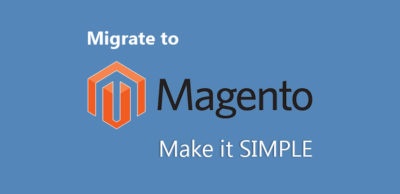
Considerations While Migrating Your Store to Magento
Migrating your online store to Magento can be a strategic decision to enhance scalability, flexibility, and overall e-commerce capabilities. However, the process requires careful planning and considerations for migrating your store to Magento of various factors to ensure a smooth transition and minimize disruptions to your business operations.
Understanding the Migration Process
Before diving into migration, grasp the intricacies involved. Evaluate your current platform’s compatibility with Magento and assess data migration requirements thoroughly. This initial step sets the stage for a successful transition.
Choosing the Right Magento Version
Selecting the appropriate Magento version is critical. Decide between Magento Open Source (formerly Community) or Magento Commerce (formerly Enterprise), based on your business needs, budget, and desired features. Each version offers unique functionalities tailored to different business scales and requirements.
Data Migration and Integration
Plan meticulously for data migration. Identify essential data to transfer, such as customer information, product details, order history, and inventory data. Ensure seamless integration with existing systems like ERP, CRM, and third-party extensions for uninterrupted operations.
Customization and Extensions
Magento’s flexibility allows extensive customization to align with your business objectives. Evaluate required customizations early in the process and prioritize essential functionalities. Research and select compatible Magento extensions to enhance your store’s capabilities without compromising performance.
SEO Considerations
Maintain SEO equity during migration. Redirect old URLs to new Magento URLs efficiently to preserve search engine rankings and traffic. Implement SEO best practices within Magento, such as optimizing meta tags, URLs, and sitemaps, to maintain and improve search visibility.
Design and User Experience
Consider the design and user experience (UX) aspects. Choose a responsive Magento theme that enhances usability across devices. Ensure a seamless transition for customers by maintaining brand consistency and intuitive navigation throughout the new Magento store.
Performance Optimization
Optimize Magento’s performance to deliver a fast and reliable shopping experience. Implement caching mechanisms, minimize server response time, and leverage Magento’s performance optimization tools to enhance page load speeds and overall site performance.
Security and Compliance
Prioritize security during migration. Implement robust security measures, including SSL certificates, secure payment gateways, and regular security patches. Ensure compliance with PCI DSS standards to protect customer data and build trust with your audience.
Testing and Quality Assurance
Thorough testing is crucial before launching your Magento store. Conduct comprehensive testing for functionality, usability, performance, and compatibility across browsers and devices. Address any issues promptly to guarantee a seamless customer experience post-launch.
Training and Support
Invest in training for your team to familiarize them with Magento’s features and functionalities. Ensure access to reliable technical support, whether through Magento’s official channels, community forums, or third-party providers, to address any post-migration challenges swiftly.
Post-Migration Monitoring and Optimization
Monitor your Magento store post-migration closely. Track KPIs such as traffic, conversions, and sales to gauge performance. Continuously optimize your store based on analytics insights, customer feedback, and industry trends to maximize ROI and achieve long-term success.
Conclusion
Migrating your online store to Magento offers immense potential for growth and enhanced e-commerce capabilities. By considering these key factors—such as planning data migration, selecting the right Magento version, optimizing performance and security, and ensuring seamless user experience—you can navigate the migration process effectively. With careful planning, execution, and ongoing optimization, your transition to Magento can position your business for success in the competitive online marketplace.
